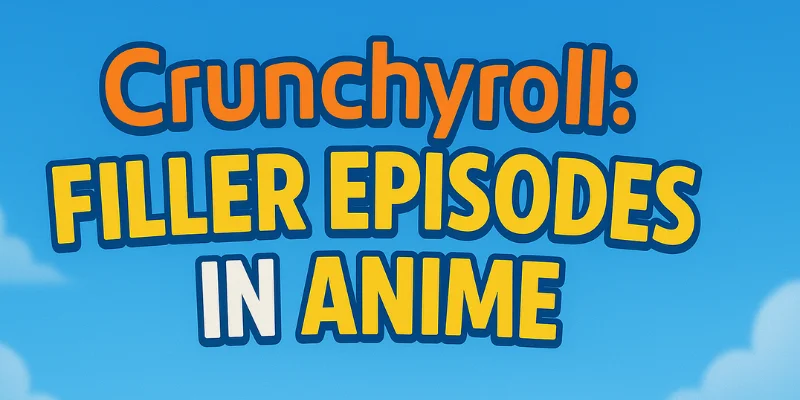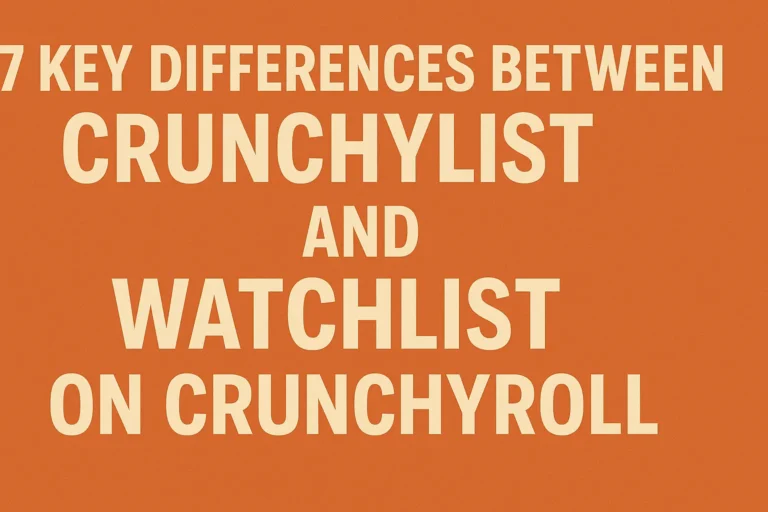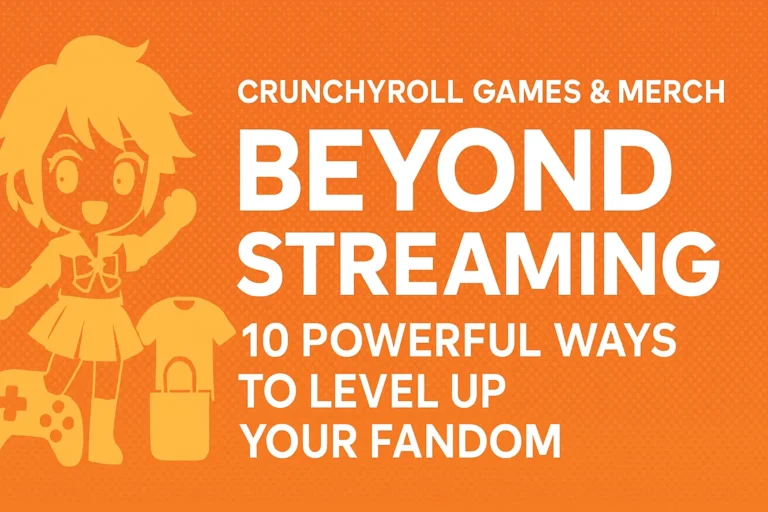The Problem with Filler Episodes in Anime – Are They Necessary or Not?
You’re binge-watching your favourite anime, completely hooked on the main story. Suddenly, the plot takes a bizarre detour; characters go on a beach trip, fight random villains, or worse, rehash old arcs with no consequence. Congratulations, you’ve hit a filler episode—a divisive staple in long-running anime.
Some fans despise them, while others appreciate the extra content. But are they truly necessary, or just lazy storytelling? Let’s break it down.
What Are Filler Episodes?
Filler episodes in anime are non-canon stories; meaning they aren’t part of the original manga or light novel. Studios create them to avoid catching up to the source material too quickly.
Why Do They Exist?
- Manga adaptation challenges: Anime production moves faster than manga releases.
- Production delays: Studios need breathing room between major arcs.
- Financial incentives: More episodes mean longer TV slots and merchandising.
Popular series like Naruto, Bleach, and One Piece are infamous for filler-heavy stretches.
Why Do Studios Use Fillers?
Avoiding the “Catch-Up” Problem
Anime adaptations often outpace manga releases. Without filler arcs, studios would either:
- Go on indefinite hiatus (like Hunter x Hunter).
- Create an anime-original ending (like Fullmetal Alchemist 2003).
Buying Time for Better Animation
Big fights (e.g., Naruto vs. Pain) require months of work. Fillers give animators extra prep time.
Testing New Ideas
Some fillers experiment with comedy, side characters, or alternate universes (like Gintama’s parody episodes).
The Biggest Complaints About Fillers

Disrupting Story Flow
Nothing kills momentum like a 20-episode filler arc right before a major battle. (Bleach’s Bount Arc, anyone?)
Inconsistent Quality
Since fillers aren’t written by the original author, they often feel off—weak villains, recycled plots, or odd character behavior.
Pointless Plotlines
Ever watched Naruto deliver a lost pet instead of training for the Chunin Exams? Exactly.
Unexpected Benefits of Filler Arcs
Character Development
Some fillers flesh out side characters (Naruto’s “Kakashi Anbu Arc” is a fan favorite).
World-Building
Canon stories rarely explore daily life. Fillers show school festivals, holidays, or downtime (*My Hero Academia’s “Class 1-A School Festival”*).
Breathing Room
After intense arcs (like One Piece’s Marineford), lighthearted fillers can be refreshing.
Worst Filler Episodes in Anime History
Let’s talk disaster. Fans still rant about these arcs years later. These are the worst filler arcs in popular anime:
- Bleach’s Bount Arc – A 46-episode detour that felt painfully slow.
- Naruto’s Post-Sasuke Retrieval Fillers – Mission after mission, with no direction.
- Dragon Ball Z’s Fake Namek Saga – Goku and friends land on a decoy planet. Nothing mattered.
- One Piece’s Goat Island Arc – A talking goat pirate? Really?
- Inuyasha’s Oni Episodes – Too much repetition, very little progress.
These arcs caused pacing issues and disappointed viewers waiting for real plot progression.
Best Fillers That Fans Actually Loved
It’s not all doom and gloom. There are fillers that fans praise.
- Gintama’s parody episodes: Self-aware, fourth-wall-breaking madness. Easily among the best.
- My Hero Academia’s “Class 1-A School Festival”: Fun, uplifting, and gave everyone screen time.
- One Piece’s G-8 Arc: A tight, funny story that many fans didn’t even realize was filler.
- Dragon Ball’s Driving School Episode: Iconic and hilarious.
These episodes are beloved because they respect character integrity, keep the tone consistent, and still feel like part of the universe.
How Modern Anime Avoids Fillers

Seasonal anime (Demon Slayer, Attack on Titan) skip fillers by:
- Taking breaks between seasons.
- Sticking closely to the manga.
Result? Tighter pacing and higher animation quality.
Are Fillers Necessary for Anime Longevity?
Pros:
- Keeps the franchise alive during manga hiatuses.
- Gives fans extra content (if done well).
Cons:
- Alienates viewers who prefer canon material.
- Risks losing binge-watchers in the streaming era.
How to Skip Fillers Without Missing Key Details
Actionable Tip: Use AnimeFillerList.com to identify skippable episodes.
- Check the filler list before starting a series.
- Watch mixed canon/filler episodes (they sometimes include minor lore).
- Skip full filler arcs unless they’re highly recommended.
The Future of Fillers – Will They Disappear?
With seasonal anime dominating, filler episodes in anime may fade. However, some studios (Toei with One Piece) still rely on them.
Possible Trends:
- Shorter, high-quality fillers (like Jujutsu Kaisen 0’s bonus episodes).
- More anime-original spin-offs (separate from the main story).
5 Actionable Tips to Handle Filler Episodes Like a Pro
- Use Filler Guides: Always check before watching a long-running series.
- Give Fillers a Shot: Some may surprise you with their charm.
- Skip Smartly: Avoid burnout by skipping when pacing suffers.
- Binge Strategically: Watch canon in chunks, then explore filler.
- Balance Expectations: Not all filler is bad. Know when to enjoy the detour.
Final Thoughts
The problem with filler episodes in anime isn’t just about story interruptions; it’s about how studios balance fan expectations, production demands, and creative freedom.
While many filler arcs miss the mark, some deliver unforgettable moments. Ultimately, fillers are part of anime’s history.
Whether they stay or fade depends on how studios and fans evolve together.







